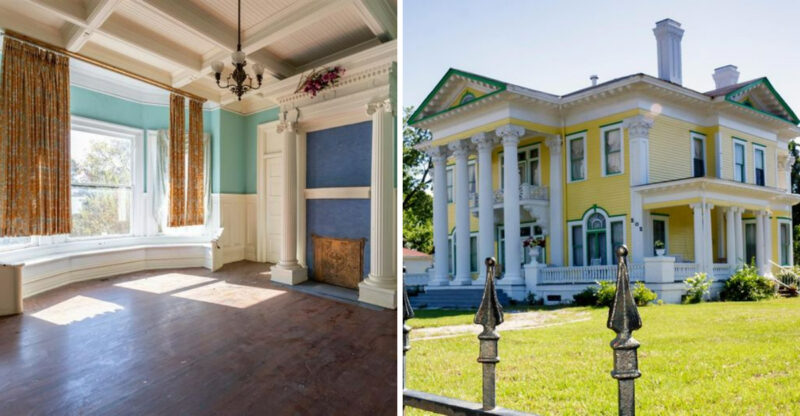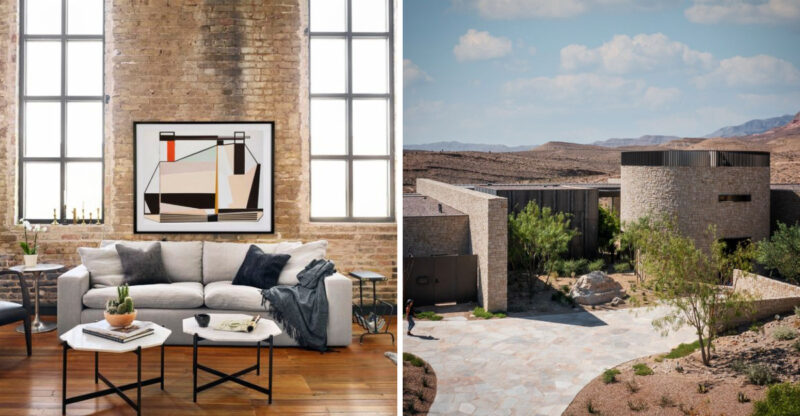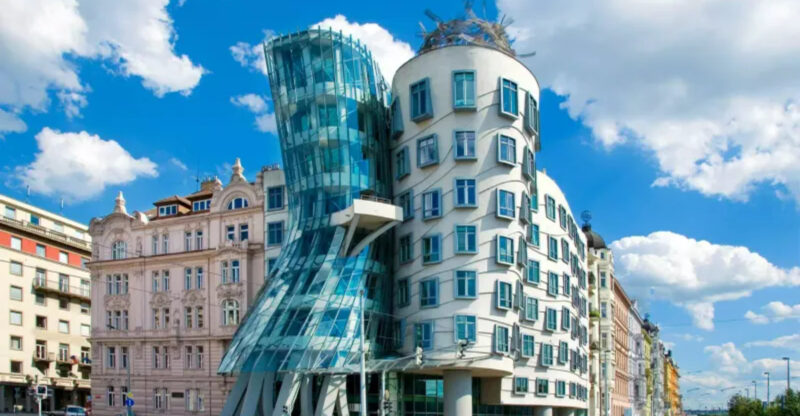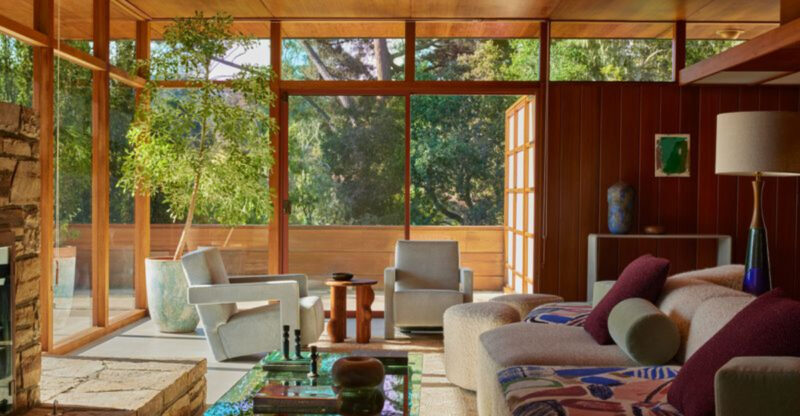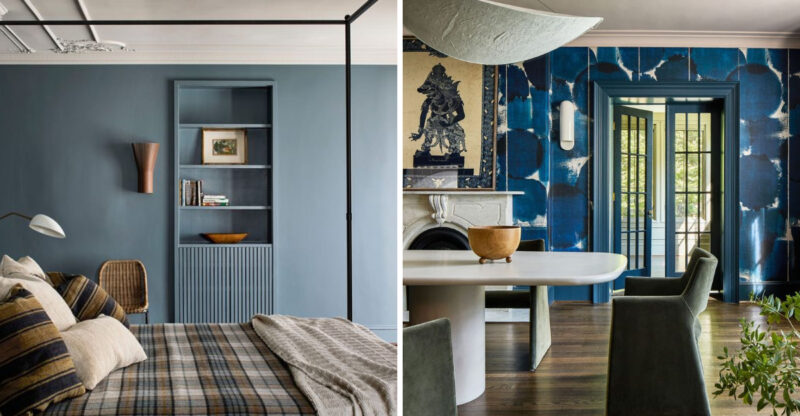21 Secluded Mansions In Mississippi Featuring Centuries Of Craftsmanship
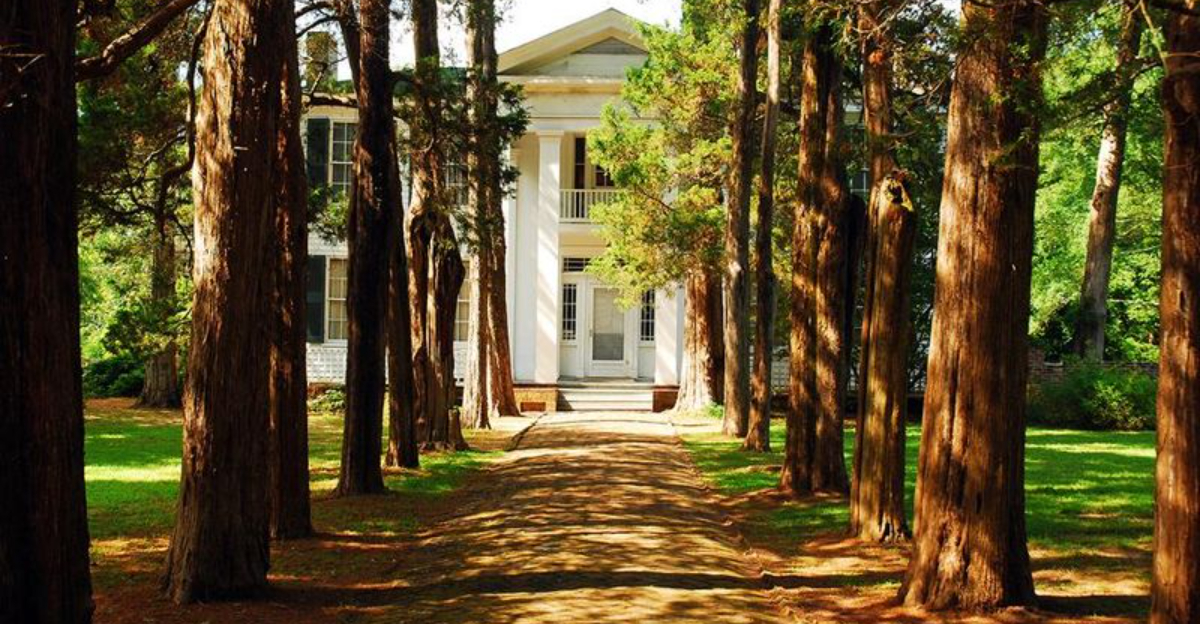
Hidden among Mississippi’s lush landscapes are magnificent mansions that tell the story of America’s past.
These architectural treasures showcase incredible craftsmanship from bygone eras, with ornate details that modern builders can rarely match.
Whether you’re a history buff, architecture enthusiast, or just looking for a glimpse into the South’s storied past, these secluded mansions offer a fascinating journey through time.
1. Longwood — Natchez, MS
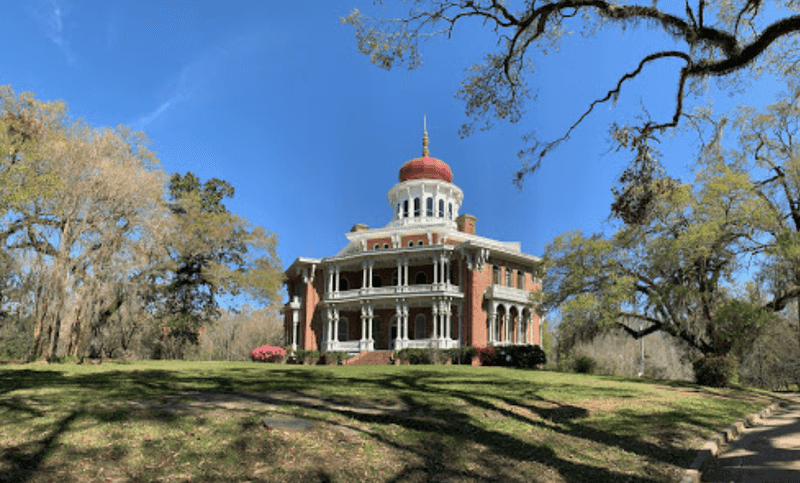
Standing as America’s largest octagonal house, Longwood remains forever unfinished – a hauntingly beautiful testament to interrupted dreams. Construction halted when the Civil War began in 1861, leaving the upper floors exactly as workers abandoned them, with tools still scattered about.
The six-story mansion showcases an Oriental Revival style with a distinctive onion-shaped dome. Though only the basement level was completed inside, visitors can still appreciate the exquisite craftsmanship in its ornate exterior details.
Surrounded by 32 acres of natural forest, Longwood’s brick façade and dramatic silhouette create an unforgettable sight among the moss-draped oaks. Local legend claims you might glimpse the ghost of original owner Haller Nutt still wandering the incomplete halls of his dream home.
2. Stanton Hall — Natchez, MS
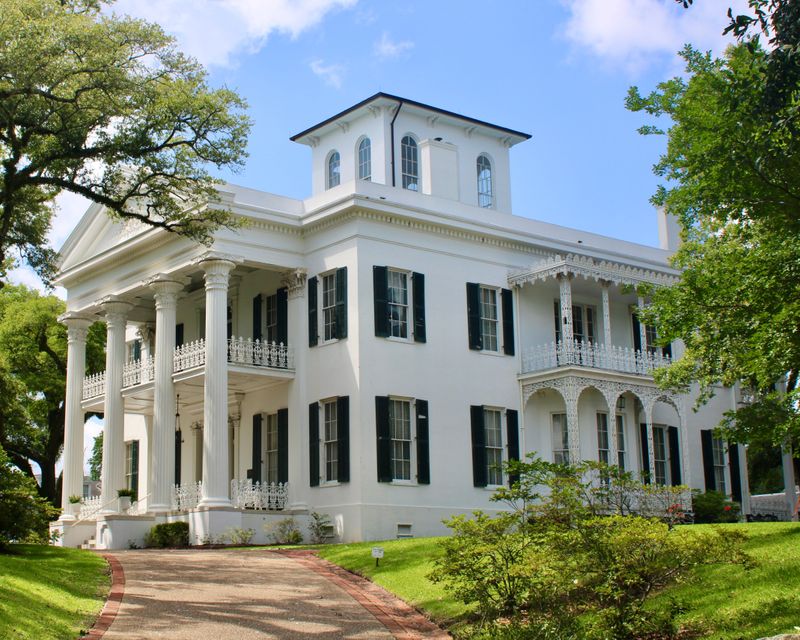
Occupying an entire city block in downtown Natchez, Stanton Hall exemplifies opulent Greek Revival architecture at its finest. Completed in 1857 for cotton merchant Frederick Stanton, this palatial white mansion cost an astounding $83,000 to build – equivalent to millions today.
Massive Corinthian columns frame the entrance, while inside, 17-foot ceilings tower above Italian marble mantels and delicate plasterwork. The original enormous mirrors were shipped from France, then transported upriver by steamboat.
During the Civil War, Union troops occupied the mansion, yet remarkably, most original furnishings survived. Today, guided tours reveal the extraordinary craftsmanship in every corner, from hand-carved mahogany doors to intricate silver doorknobs that showcase the incredible wealth of the Old South’s cotton aristocracy.
3. Rosalie Mansion — Natchez, MS
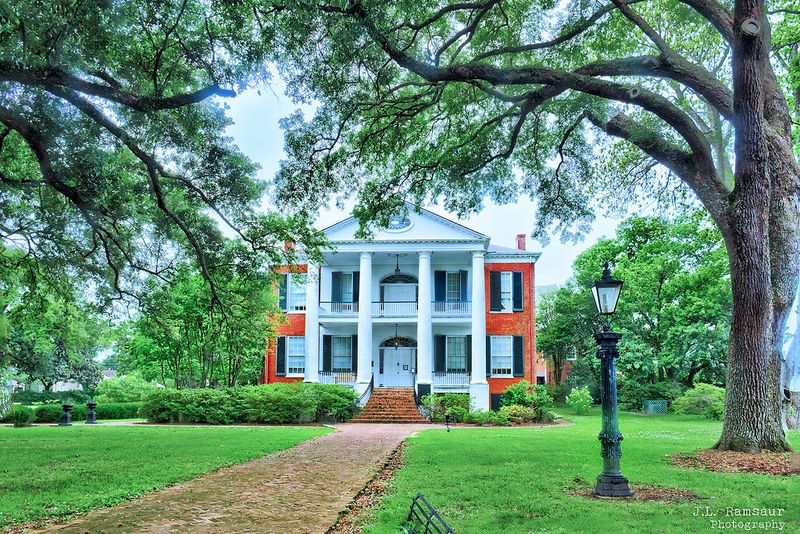
Perched dramatically on a bluff overlooking the Mississippi River, Rosalie stands as a magnificent example of Federal architecture with its symmetrical design and elegant simplicity. Built in 1823 on the site of the former French Fort Rosalie, this brick mansion became the architectural model for many other grand homes throughout the region.
The craftsmanship shines in details like the floating spiral staircase that appears to have no visible means of support. During the Civil War, Union General Walter Gresham used Rosalie as his headquarters, helping spare Natchez from destruction.
Hand-carved mantels, original furnishings, and Bohemian glass chandeliers fill the rooms. The mansion’s name honors the Countess of Pontchartrain, with magnificent gardens offering sweeping views of the mighty Mississippi that have captivated visitors for nearly two centuries.
4. Monmouth Historic Inn — Natchez, MS
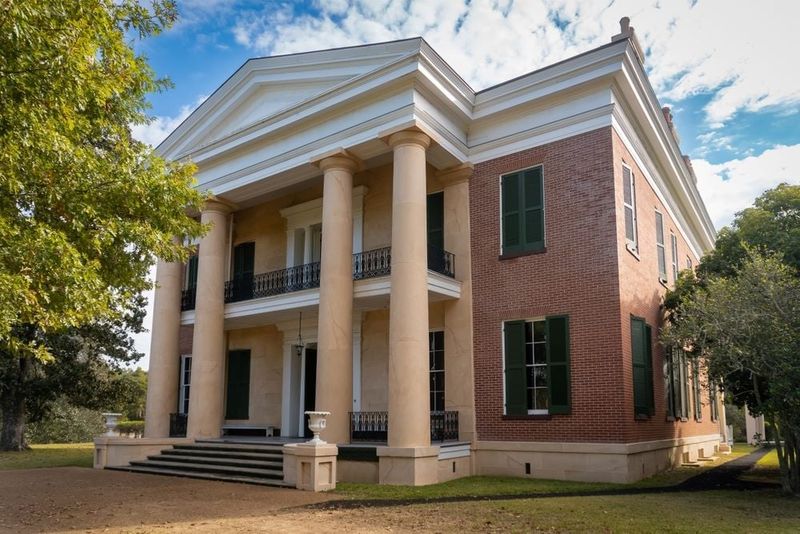
Hidden behind ancient oak trees draped with Spanish moss, Monmouth represents the pinnacle of Greek Revival design. Completed in 1818 for John Quitman, a former Mississippi governor and Mexican War general, the mansion showcases exceptional craftsmanship throughout its 26 acres.
Artisans hand-carved the elaborate crown moldings that adorn 14-foot ceilings. The front façade features fluted Doric columns supporting a classic entablature, while inside, period antiques and original oil paintings transport visitors to a bygone era.
After falling into disrepair following the Civil War, Monmouth was meticulously restored in the 1970s and now operates as a luxury inn. Guests can wander through formal gardens with blooming camellias and azaleas, or relax on the same veranda where Quitman once entertained political allies and planned his military campaigns.
5. Dunleith Historic Inn — Natchez, MS
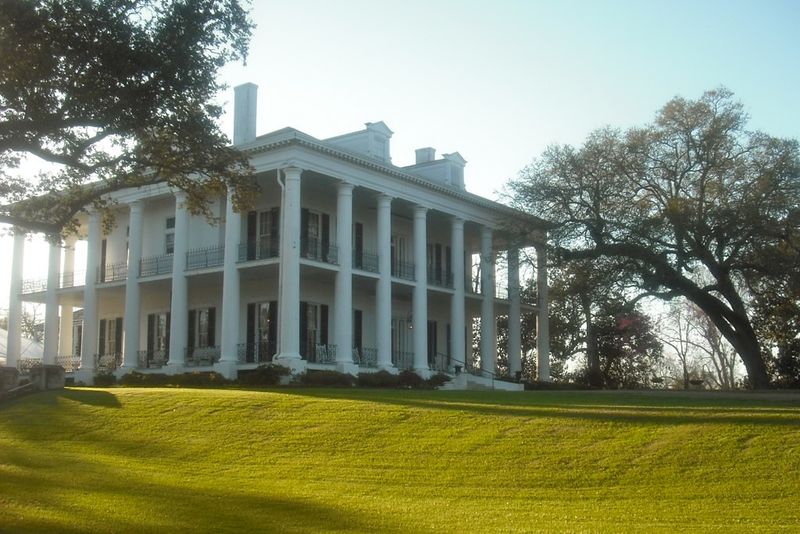
Unlike any other mansion in Mississippi, Dunleith stands as the state’s only plantation home completely encircled by massive columns on all four sides. This architectural marvel, built in 1856, showcases Greek Revival style with 26 Tuscan columns supporting a full entablature around the entire structure.
The original 1790 home that stood here burned to the ground, reportedly the night before a wedding was to take place. Legend claims the bride-to-be occasionally appears in an upstairs window of the rebuilt mansion.
Dunleith’s craftsmanship extends to its numerous outbuildings, including a rare standalone kitchen house, dairy, and poultry house, all constructed with the same meticulous attention to detail. The mansion’s distinctive double-level wraparound porches provide spectacular views of the 40-acre property, while the interior boasts hand-planed cypress woodwork and ornate plaster medallions.
6. Nutt’s Folly (Windsor Ruins) — near Port Gibson, MS
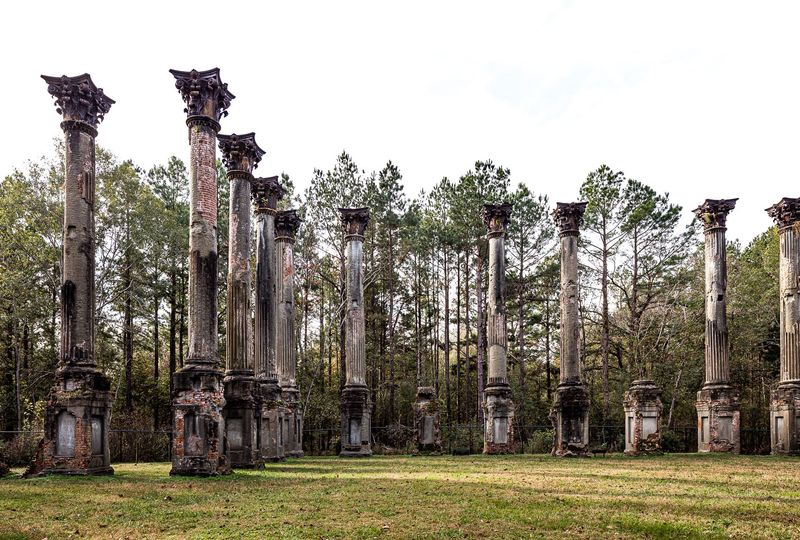
Standing like ancient sentinels in the Mississippi countryside, the 23 hauntingly beautiful Corinthian columns of Windsor Ruins create one of the state’s most photographed landmarks. These massive columns, reaching 45 feet high, are all that remain of what was once the largest antebellum Greek Revival mansion in Mississippi.
Wealthy planter Smith Coffee Daniell II spent $175,000 (millions in today’s dollars) building this architectural masterpiece in 1861. Ironically, he lived in his dream home only a few weeks before dying at age 34.
The mansion miraculously survived the Civil War only to be destroyed by fire in 1890 when a party guest’s cigar ignited the roof. The craftsmanship of the remaining columns—each crafted from bricks made on-site and covered with plaster to resemble marble—offers a ghostly glimpse of the extraordinary skill that created this magnificent structure.
7. Cedar Grove Mansion — Vicksburg, MS
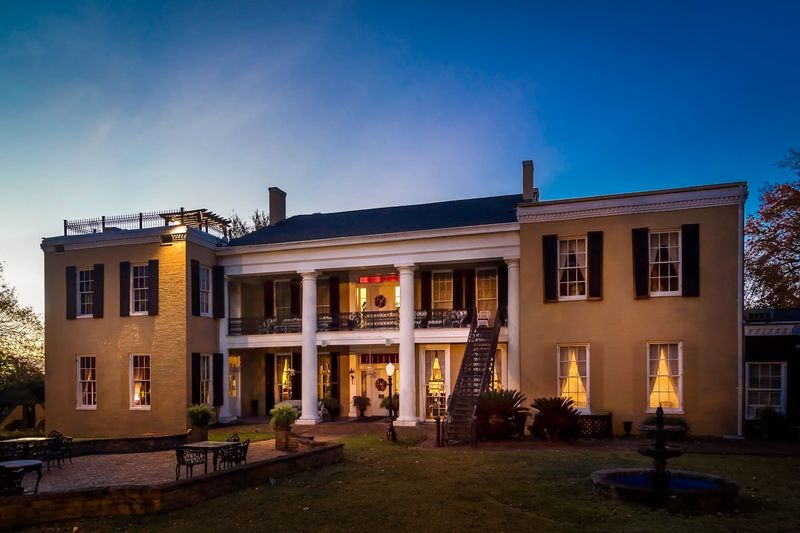
Remarkably preserved through the Siege of Vicksburg, Cedar Grove bears the physical scars of the Civil War with a cannonball still embedded in the parlor wall. Built in 1840 by John Klein as a wedding gift for his bride, this Greek Revival masterpiece showcases 45 rooms filled with period antiques and original furnishings.
Master craftsmen created the elaborate plasterwork ceilings, each room featuring a unique design with intricate rosettes and medallions. The mansion’s front façade impresses with towering columns and a graceful double staircase leading to the entrance.
During the Civil War, the Klein family provided shelter to wounded soldiers from both sides in their basement. The craftsmanship extends beyond the main house to the meticulously designed gardens featuring century-old magnolias and camellias. Cedar Grove’s hand-carved marble mantels and crystal chandeliers reflect the incredible wealth generated from cotton during the antebellum era.
8. McRaven House — Vicksburg, MS
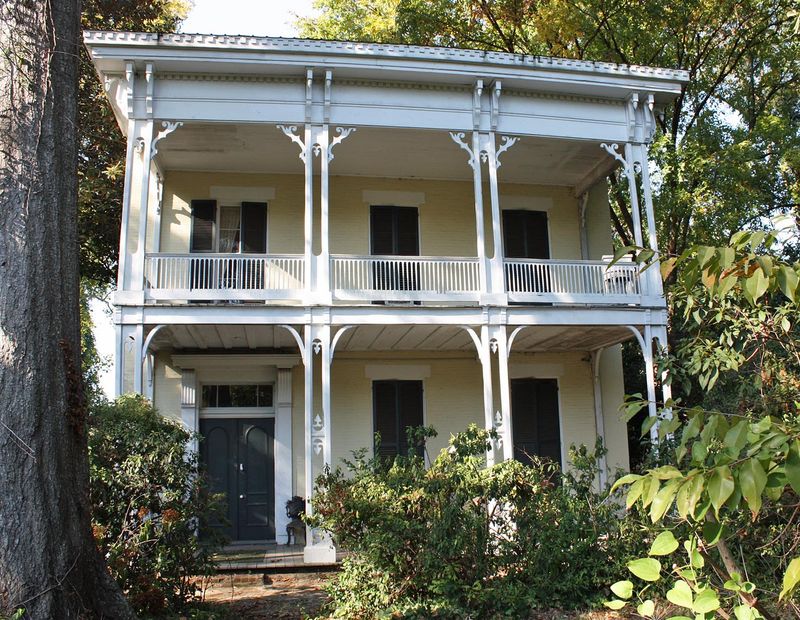
Known as “Mississippi’s most haunted house,” McRaven uniquely showcases three distinct architectural periods in one structure. The oldest section, built in 1797 as a highway robbery hideout, features frontier craftsmanship with hand-hewn beams and primitive construction techniques.
The middle section, added in 1836, demonstrates Empire period architecture with higher ceilings and more refined woodwork. Finally, the Greek Revival section from 1849 showcases the pinnacle of antebellum craftsmanship with elaborate crown moldings and formal architectural elements.
During the Civil War, the home served as a Confederate field hospital, with over 1,500 soldiers dying here. This tragic history may explain the numerous paranormal encounters reported by visitors. The original furnishings remain in place, including a flying wing staircase built without nails and a rare Empire canopy bed where owner Andrew Glass’s wife died during childbirth in 1836.
9. Anchuca Mansion — Vicksburg, MS
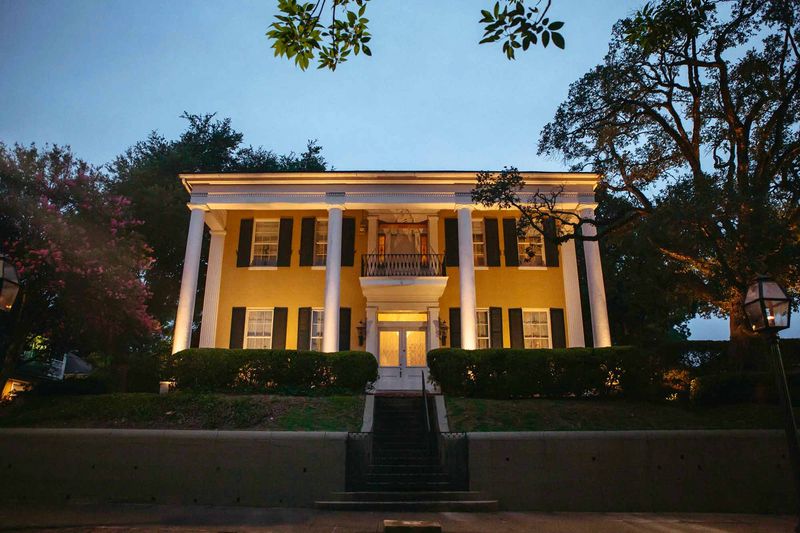
Anchuca stands as Vicksburg’s first columned mansion and one of Mississippi’s earliest examples of Greek Revival architecture. Completed in 1830, the name comes from a Choctaw word meaning “happy home,” though its history includes both joyful and tragic chapters.
The mansion survived heavy bombardment during the 47-day Siege of Vicksburg in 1863. From its second-story balcony, Jefferson Davis delivered one of his last public addresses to neighbors and friends after the Confederacy’s fall.
Master craftsmen created the spectacular spiral staircase that appears to float without support a feat of engineering that continues to amaze modern builders. The mansion’s interior woodwork showcases hand-carved mahogany and walnut details, with mantels featuring classical motifs executed with extraordinary precision. Original glass remains in many windows, with characteristic waviness that creates dancing patterns of light across heart pine floors worn smooth by nearly two centuries of footsteps.
10. Bellevue Mansion — Columbus, MS
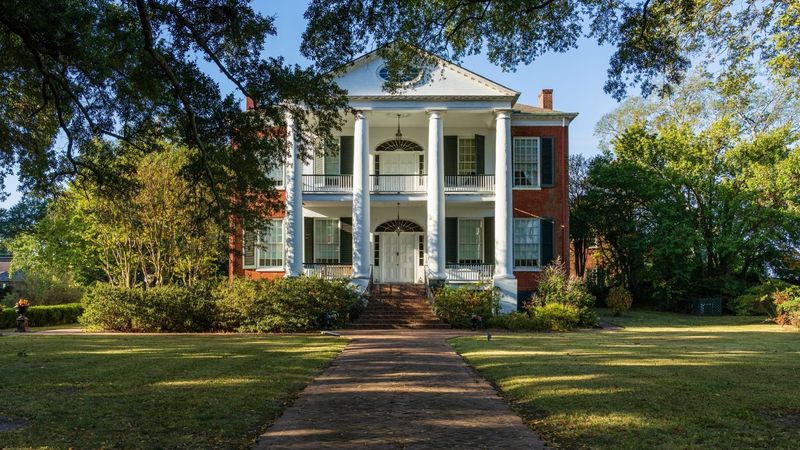
Nestled among ancient oaks, Bellevue represents one of Mississippi’s finest examples of Federal-style architecture with its symmetrical design and restrained elegance. Built in 1837 by Dr. William Prewett, the mansion’s exterior simplicity contrasts with its remarkably detailed interior craftsmanship.
Artisans hand-carved the elaborate ceiling medallions, each room featuring a unique floral design. The mansion’s most distinctive feature is its curved double staircase with delicate spindles, created without modern tools yet perfectly balanced and still structurally sound after nearly two centuries.
During the Civil War, Bellevue served as a hospital for wounded soldiers, with bloodstains still visible on some floorboards. The mansion’s name means “beautiful view” in French, referencing its position atop a gentle rise. Six generations of the same family maintained Bellevue until the 1990s, preserving original furnishings and craftsmanship that modern builders struggle to replicate.
11. Riverview (Captain Harris House) — Columbus, MS
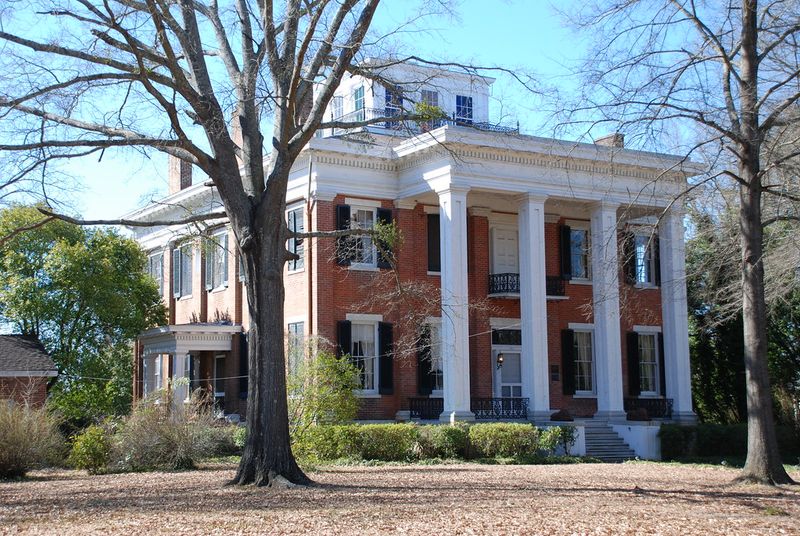
Commanding views of the Tombigbee River inspired the name of this magnificent Greek Revival mansion, built in 1847 by riverboat captain Thomas Harris. The home’s most remarkable feature is its two-story portico supported by massive Doric columns hand-crafted from single cypress trees.
Inside, master craftsmen created elaborate plasterwork ceilings with intricate floral patterns and medallions for crystal chandeliers. The central hallway stretches 70 feet, designed to capture river breezes for natural cooling before air conditioning existed.
Harris incorporated numerous nautical elements into the design, including a widow’s walk and compass rose inlaid in the entry hall floor. During the Civil War, the mansion served as headquarters for Union General Grenville Dodge, whose respect for the home’s craftsmanship helped save it from destruction. The original hand-forged hardware remains throughout, with door hinges shaped like anchors reflecting the captain’s riverboat background.
12. Whitehall — Columbus, MS
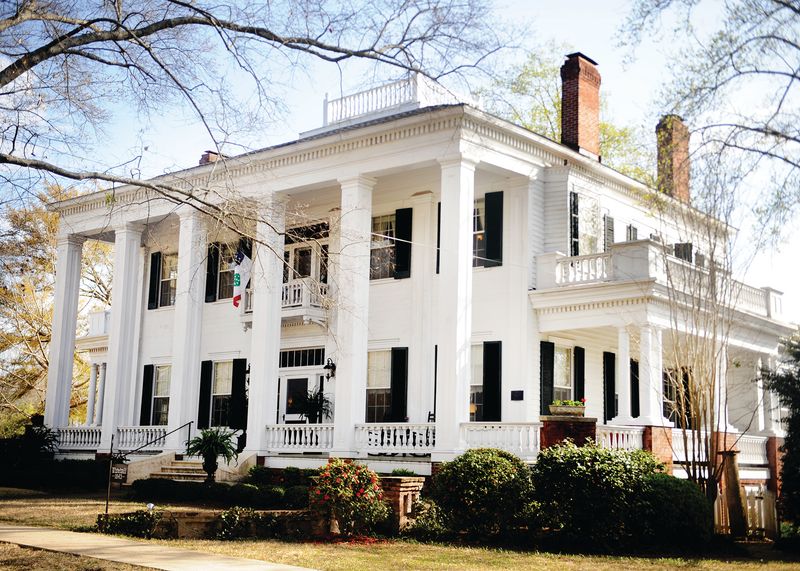
Unlike most antebellum mansions, Whitehall stands as a rare example of Gothic Revival architecture in Mississippi, with its distinctive pointed arches and decorative vergeboard trim. Built in 1843 by physician and planter Dr. James Lull, the mansion’s name refers to its original all-white exterior, though later owners added the Victorian color scheme seen today.
Master craftsmen created the home’s most striking feature: elaborate tracery windows with diamond-shaped panes that cast kaleidoscope patterns across interior walls. The central hall features a spectacular curved staircase with hand-carved balusters representing various botanical specimens collected by Dr. Lull.
During the Civil War, the mansion served as a hospital for both Confederate and Union soldiers. Whitehall’s craftsmanship extends to its unique furniture pieces, many built into the structure itself, including window seats with hidden storage compartments and built-in bookcases with secret panels that once concealed valuables from potential looters.
13. Waverley Mansion — near West Point, MS
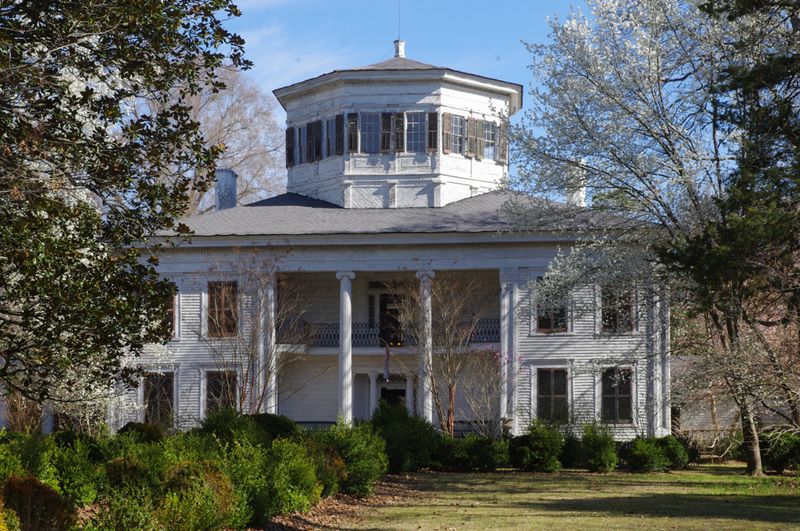
Rising from the Mississippi countryside like a Greek temple, Waverley’s most distinctive feature is its octagonal cupola crowning a four-story central rotunda. Built between 1845-1852 by Colonel George Young, this architectural marvel sat abandoned for nearly 50 years yet miraculously survived with most original features intact.
The mansion’s craftsmanship reaches its zenith in the main hall’s self-supporting spiral staircase that appears to float without visible means of support. Sixteen-foot ceilings throughout the main floor accommodate floor-to-ceiling windows with original glass panes that catch the light in hypnotic patterns.
Young designed an innovative ventilation system where the cupola draws hot air upward through the rotunda, creating natural air conditioning. Master plasterers created elaborate ceiling medallions, each room featuring unique designs with three-dimensional flowers and fruits. Waverley’s hand-carved black walnut doors feature silver-plated hardware imported from Philadelphia, showcasing the extraordinary attention to detail throughout this architectural masterpiece.
14. Linden Plantation — Natchez, MS
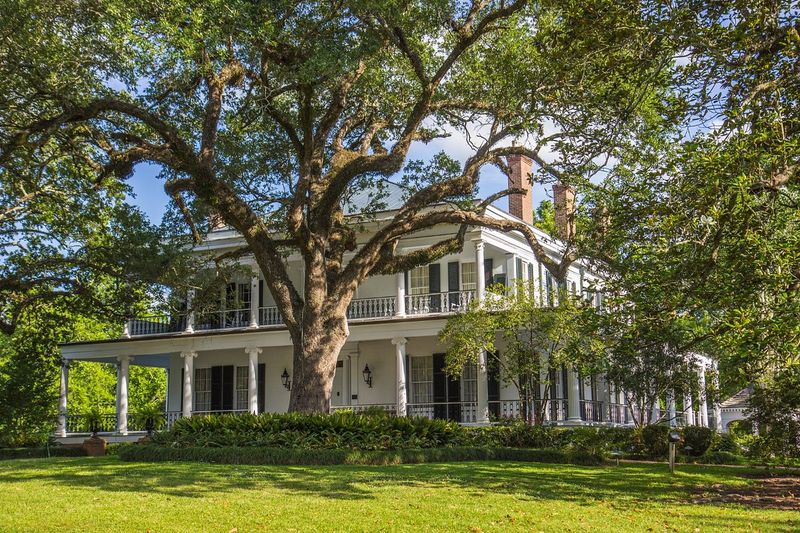
Believed to be the oldest standing house in Natchez, Linden’s front doorway has been replicated throughout America as the iconic “Natchez doorway.” Built around 1790 by Thomas and Hannah Lintot, this Federal-style mansion predates the more elaborate Greek Revival homes that followed.
The home’s enduring craftsmanship appears in hand-hewn cypress beams joined with wooden pegs rather than nails. Intricate fanlight windows above doorways showcase exceptional glasswork techniques rarely seen in modern construction.
Seven generations of the same family maintained Linden until recently, preserving original furnishings including a rare Chippendale secretary. The mansion’s name comes from the magnificent linden trees planted by the original owners. Local legend claims the ghost of the last Lintot daughter sometimes appears in the hallway wearing an 1850s wedding gown – she died mysteriously on her wedding day, and her spirit reportedly still waits for a ceremony that never happened.
15. Elms Court — Natchez, MS
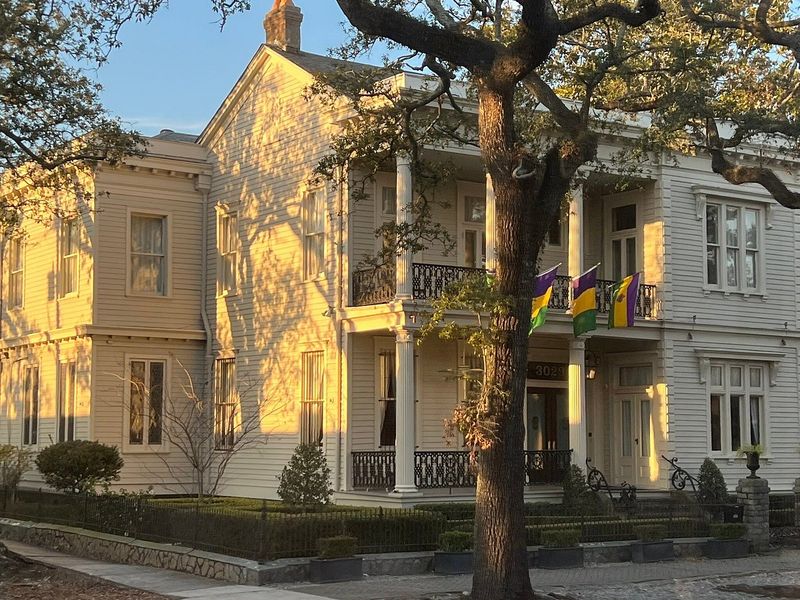
Surrounded by 25 acres of ancient live oaks, Elms Court represents one of the largest suburban villas in Natchez. Built in 1836, this Greek Revival masterpiece features a distinctive L-shaped design that departs from the symmetrical layouts typical of the period.
Master craftsmen created the mansion’s most remarkable feature: a cantilevered staircase that curves gracefully through three stories without visible support. The grand parlor showcases 14-foot ceilings with plasterwork rosettes hand-molded by artisans who trained in European techniques.
During the Civil War, the mansion served as a refuge for families fleeing Vicksburg during the siege. Unlike many antebellum homes that changed hands repeatedly, Elms Court remained in the same family for over 160 years, preserving its original craftsmanship. The mansion’s name references the magnificent American elm trees that once lined the entrance drive, though most were lost to Dutch elm disease in the mid-20th century.
16. The Briars — Natchez, MS
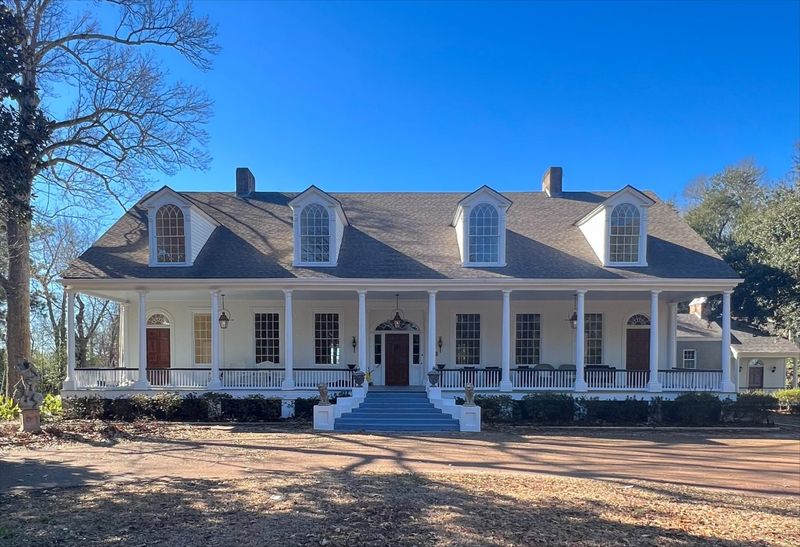
Famous as the wedding site of Jefferson Davis to Varina Howell in 1845, The Briars showcases exceptional Federal-style architecture on a bluff overlooking the Mississippi River. Built in 1818, the mansion’s most distinctive feature is its unusual double-level gallery with delicate ironwork railings crafted by slave artisans.
Master woodworkers created the home’s elaborate crown moldings using hand tools to achieve a level of detail rarely seen in modern construction. The original heart pine floors, now burnished to a rich amber color after two centuries of use, were cut from trees over 200 years old when harvested.
During the Civil War, Union gunboats on the Mississippi often fired warning shots near the property, but The Briars escaped serious damage. The mansion’s name comes from the wild briar roses that once covered the property. Jefferson Davis reportedly proposed to Varina under the massive oak tree that still stands in the side yard.
17. Magnolia Hall — Natchez, MS
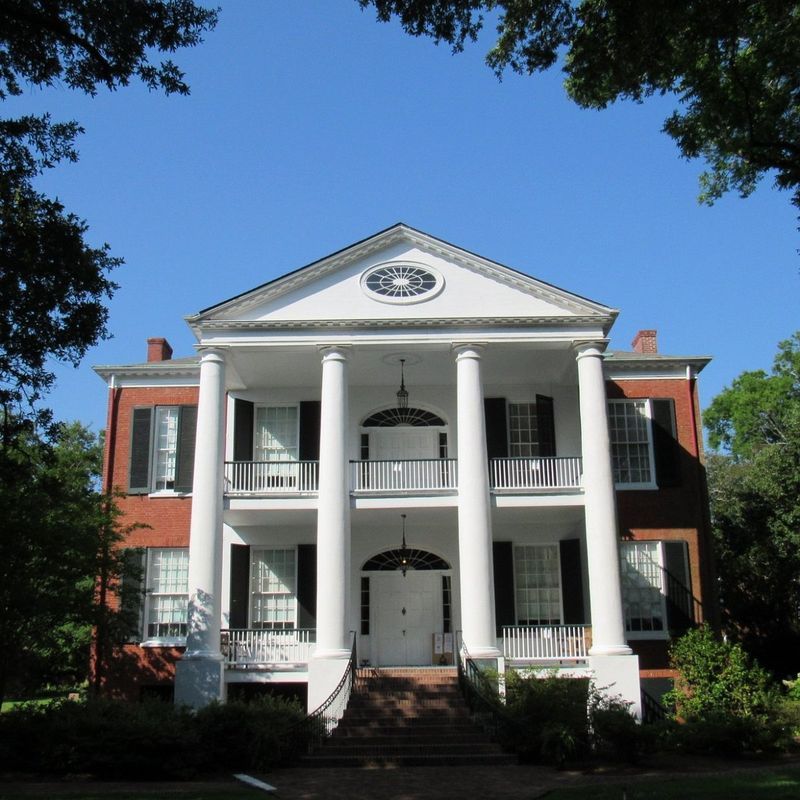
Completed just months before the Civil War began, Magnolia Hall represents the last great mansion built in Natchez before the conflict changed the South forever. This Greek Revival masterpiece, constructed in 1858 for wealthy merchant Thomas Henderson, features a unique Grecian-style entrance portico with elaborate Corinthian columns.
The mansion’s most remarkable craftsmanship appears in its ornate plasterwork ceilings, each room featuring a different magnolia flower design a reference to both the home’s name and Mississippi’s state flower. During the Union bombardment of Natchez, a cannonball crashed through the roof but remarkably caused minimal damage.
Master craftsmen created the elaborate curved staircase that appears to float without support through three stories. Henderson commissioned specialized craftsmen from New Orleans to create the hand-painted scenic wallpaper in the formal dining room, depicting panoramic landscapes that required extraordinary artistic skill to execute properly.
18. Choctaw Hall — Natchez, MS
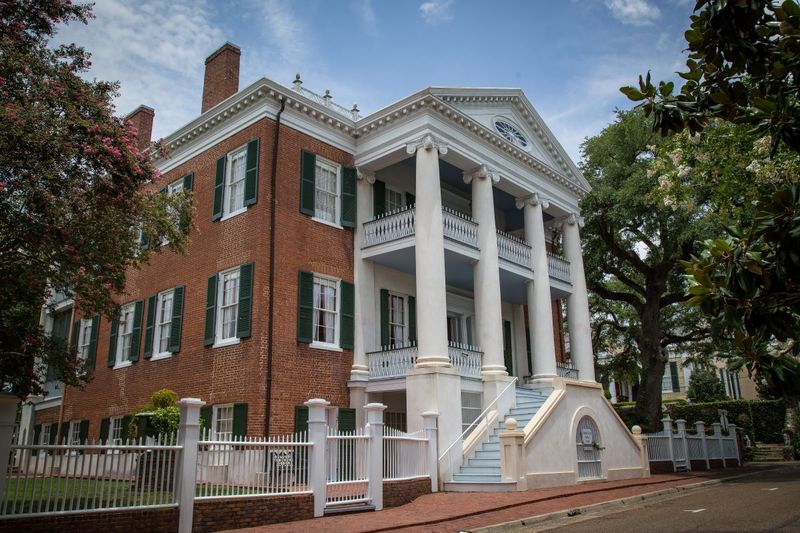
Rising three and a half stories, Choctaw Hall stands taller than most Natchez mansions, creating an imposing presence with its massive brick construction. Built in 1836 by successful cotton broker David Byers, the home showcases both Federal and Greek Revival architectural elements during a transitional period in American design.
Master craftsmen created the mansion’s most distinctive feature: twin cantilevered spiral staircases that mirror each other on opposite sides of the central hall. The craftsmanship extends to intricate wood graining techniques where skilled painters transformed ordinary pine into the appearance of exotic mahogany and walnut.
During the Civil War, the mansion served as a hospital for wounded soldiers. The home takes its name from the Choctaw Nation that once occupied this territory. Original gas light fixtures remain throughout, later converted to electricity but maintaining their authentic appearance with hand-blown glass shades and intricate brass filigree work.
19. Myrtle Terrace — Natchez, MS
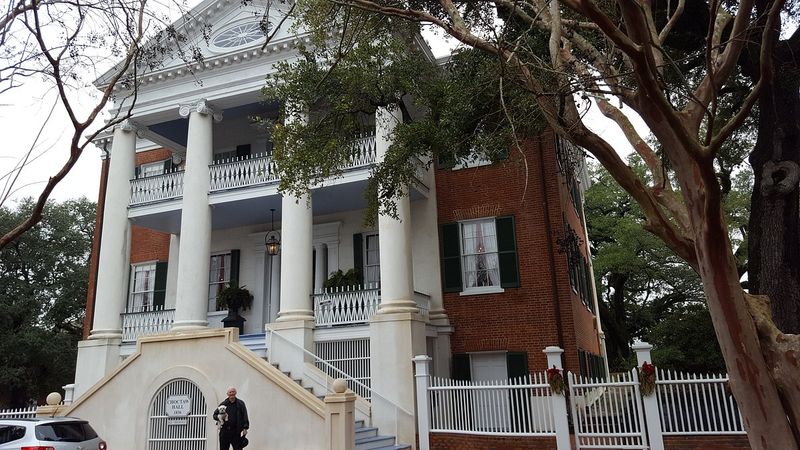
Unlike the white columns typical of Greek Revival mansions, Myrtle Terrace showcases distinctive red brick construction with elaborate Italianate details. Built in 1835 for attorney William Newton Mercer, the mansion features decorative bracketed eaves and arched windows that reflect European architectural influences rare in Mississippi.
Master stonecutters created the marble mantels throughout the home, each uniquely carved with classical scenes and botanical motifs. The craftsmanship reaches its peak in the oval drawing room where the curved walls required exceptional skill to construct without modern tools.
During the Civil War, the mansion housed important documents from the Natchez courthouse for safekeeping. The home takes its name from the myrtle bushes that line the terraced gardens descending toward the Mississippi River. Original hand-painted French wallpaper remains in several rooms, showcasing panoramic scenes of ancient Rome – a luxury item that required tremendous wealth to import in the 1830s.
20. Mount Holly Plantation — near Lake Washington, MS
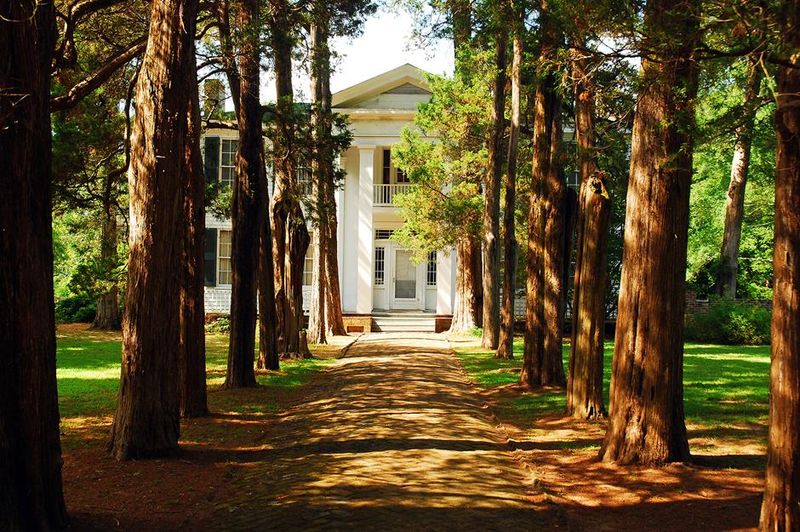
Rising from the Mississippi Delta landscape, Mount Holly represents one of the state’s finest examples of Gothic Revival architecture, with its distinctive pointed arches and ornate vergeboard trim. Built in 1855 for Margaret Johnson Erwin, this architectural anomaly stands in stark contrast to the Greek Revival style that dominated Southern plantation homes.
Master craftsmen created the mansion’s most distinctive feature: elaborate tracery windows with stained glass panels imported from Europe. The central hall features a spectacular split staircase with hand-carved balusters representing various native Mississippi plants.
During the Civil War, Union gunboats patrolling Lake Washington often threatened the property but never fired upon it. The mansion’s name references the holly trees that once lined the entrance drive. Mount Holly gained literary fame when William Faulkner used it as inspiration for his fictional “Sutpen’s Hundred” plantation in the novel “Absalom, Absalom!” – the author reportedly visited several times during his youth.
21. Beauvoir — Biloxi, MS
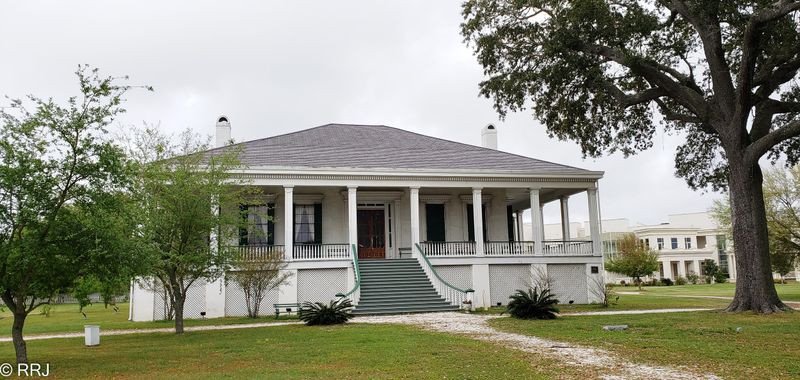
Standing defiantly against both Hurricane Katrina and the passage of time, Beauvoir serves as the final home of Confederate President Jefferson Davis and showcases exceptional Gulf Coast architectural craftsmanship. Built in 1852 as a summer retreat, this raised cottage design with wide galleries on all four sides represents a unique adaptation to the coastal climate.
Master craftsmen created the mansion’s most distinctive features: hand-carved brackets supporting the wide overhanging eaves and delicate lattice work that filters the harsh southern sunlight. The home sits elevated on brick piers to protect against storm surges a design that helped it survive numerous hurricanes.
After the Civil War, Davis spent his final years here writing his memoirs. The name “Beauvoir” means “beautiful view” in French, referencing its Gulf of Mexico vistas. Though severely damaged by Hurricane Katrina in 2005, master craftsmen meticulously restored the mansion using traditional techniques, preserving the extraordinary workmanship for future generations.

